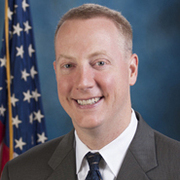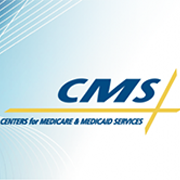CMS Announces Top 3 Volume to Value Medicare Payment Goals
“We want to test new models, learn what works, and scale successes rapidly. And we cannot and do not want to do this alone."

- Patrick Conway, MD, MSc, Chief Medical Officer at the Centers for Medicare & Medicaid Services (CMS), is speaking out about the administration’s overarching goals for Medicare’s future. In yesterday’s blog post, Conway said CMS is indeed diligently working to transition Medicare payments from volume to value.

“CMS is continually working to turn this vision into reality through annual rulemaking and the CMS Innovation Center, building on bipartisan ideas, initiatives and legislation from both Congress and the states,” he stated.
Conway (pictured left) referenced the newly published final 2016 Medicare provider payment rules as an example of CMS’s commitment to quality, value, and patient-centered care.
CMS explained a trifold dedication to value and quality
CMS’s continued dedication is allegedly evident by three specific examples. The first is the Home Health Value-Based Purchasing model which connects home health payments to quality performance to ultimately advance health outcomes.
Conway confirmed that this January, Medicare-certified home health agencies providing services in Massachusetts, Maryland, North Carolina, Florida, Washington, Arizona, Iowa, Nebraska, and Tennessee will participate.
Secondly, Conway said CMS is beginning to implement the Merit-Based Incentive Payment System (MIPS). It is also executing incentives for involvement with Alternative Payment Models (APMs).
The Sustainable Growth Rate (SGR) formula – designed to limit Medicare physician payment increases – is undergoing a makeover so physician services can better support patient and family-based care efforts.
“These new approaches, part of the bipartisan Medicare Access and CHIP Reauthorization Act, will give physicians and other practitioners the opportunity to be rewarded for providing high quality care at lower costs, will reduce administrative burden, and will enable doctors to spend more time with their patients,” Conway asserted.
A third objective of Conway’s included advance care planning payments.
“A wide range of stakeholders and bipartisan members of Congress supported our proposal to make separate payments to doctors and other practitioners who provide elective advance care planning services to Medicare beneficiaries in a variety of settings,” Conway explained.
“We believe this policy supports [patient-centered] and family-centered care for seniors and other Medicare beneficiaries.”
CMS noted improvement in patient safety, adverse incidents
According to Conway there has been a 17 percent decrease in patient harm across the nation over the past three years.
 “Thanks to several CMS programs that are improving patient safety in hospitals, such as the Partnership for Patients, from 2010 to 2013, there has been 1.3 million fewer hospital acquired conditions and 50,000 patient deaths avoided, leading to an estimated $12 billion savings in health care costs,” Conway reported.
“Thanks to several CMS programs that are improving patient safety in hospitals, such as the Partnership for Patients, from 2010 to 2013, there has been 1.3 million fewer hospital acquired conditions and 50,000 patient deaths avoided, leading to an estimated $12 billion savings in health care costs,” Conway reported.
CMS’s two primary Medicare payment goals – tying 30 percent of traditional Medicare payments to alternative payment models and tying 85 percent of all traditional Medicare payments to quality or value – by the end of next year is still underway.
“We are pleased with the progress towards transforming our healthcare system into one that is better, smarter, and results in healthier people. But, there is more work to be done. The last five years have seen the most positive delivery system improvements in our nation’s history, and we are committed to accelerating that progress,” Conway said.
“We want to test new models, learn what works, and scale successes rapidly. And we cannot and do not want to do this alone. Through working with both the private and public sectors, we know that we can accomplish the common goals – delivering better and improved care while spending taxpayer dollars wisely – that will result in healthier Americans. Let’s move forward together.”
